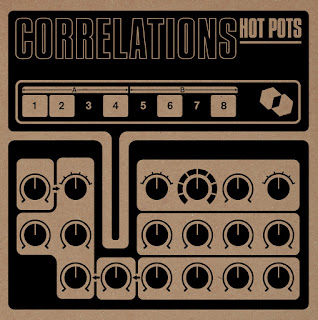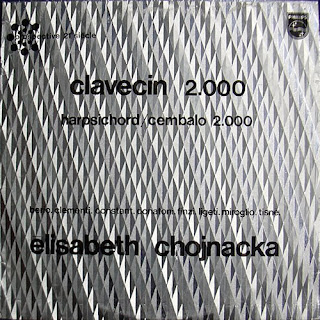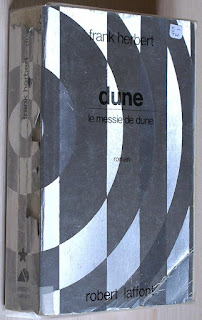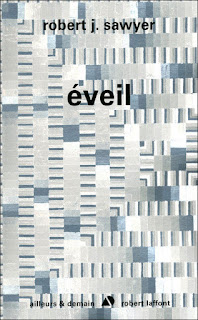Here's my paean to "Digital Love" and Discovery, part of a terrific NPR Music multi-authored tribute to Daft Punk - which touches on the proto-chillwave / yacht rock anticipating retromaniac moves on that album, and then the back-to-analogue gesture of Random Access Memories. (As discussed further in this interview with the duo I did for New York Times).
Probably the most
high profile example of the uncanny temporality of the 21st Century
is one of 2013’s biggest pop music events. One of the few that could honestly
be described as an Event in the old sense of the word. But if Daft Punk’s
Random Access Memories comes to define
2013, it’ll be through rejecting 2013.
It’s an album that
is full of references to time, transience, the notion of a lost future, and
memory. The song “Fragments of Time”,
for instance, is about instant nostalgia, this sort of future anterior syndrome
when we experience rapture or epiphany, then immediately project ahead to
looking back at it. The title Random Access Memories itself is a pun on
computer memory versus human memory.
Musically, the
whole project was informed by a paradox specific to Daft Punk’s own dilemma as
artists who had done sample-based dance music in the late Nineties and early
2000s, and taken that as far as they could. How to go forward? Daft Punk
decided the only way was to go back.
Partly because the sounds they’d helped to pioneer in the Nineties as
prominent figures in techno-house culture had become the norm. Daft Punk-like
sounds make up so much of what you hear on Top 40 radio in America today. The future-rush that those kind of electronic
and digitally processed transmitted to listeners in the 90s and which felt like
a preview of the 21st
Century, that’s necessarily now gone. Becoming omnipresent and everyday has
made these sounds banal and mundane – at best, not futurism but NOW-ism.
In reaction to
digital overdrive and the burn-out it induces, Daft Punk decided to go analogue.
Random Access Memories is a whole-sale reversion to the late 70s and early
eighties: slick disco-funk in the vein of Michael Jackson’s Off The Wall,
Chic, The Whispers and Earth Wind and
Fire; Fleetwood Mac and Eagles style soft rock; late period progressive rock
and New Wave at its most radio-friendly (The Cars, for instance). The cut-off point for this time travel
exercise is that point in the early-to-mid Eighties when Fairlight samplers,
sequenced rhythms, and MIDI become the state of the art in recording
studios. All that, along with the kind
of computer software that came later and that Daft Punk once used, is rejected,
in favor of high-calibre musicianship
and live drumming from the session sticksman who worked for Michael Jackson.
Two of the hallmark
impulses in modernism are the terror of repeating yourself, and terror of
repeating something that another artist has already done. For Daft Punk those
two impulses became at loggerheads: they didn’t want to repeat what they had
done before (because in a context where their influence is legion, they would
no longer stand out), so they were impelled to repeat and to remake styles of
music that were superseded over thirty
years ago.
Geeta Dayal
described Daft Punk’s approach as sampling taken to the next level: they
reconstructed the sort of teams of skilled musicians and sound engineers that
made the kind of music that Daft Punk in the 90s liked to sample and rework into contemporary dancefloor
anthems. But I think they go even
further than that: it’s as though they’re “sampling” the Zeitgeist of the late
Seventies and early Eighties. They’re trying to reconstruct the episteme, the larger cultural matrix that produced
albums like Fleetwood Mac’s Rumours and Tusk, or Off the Wall. Not just the
analogue means of production, but
analogue sense of temporality. In particular, the Event, the mass
synchronized experience of “the whole
world” tuning into some kind of cultural artifact: movies like Stars Wars and
Saturday Night Fever, records like Sgt
Pepper’s and Thriller. Hence the much-discussed promotional
campaign with its teasing hints and initial reliance on analogue-era techniques
like billboards and television ads.
There’s a nostalgia here not just for the monoculture (“pop culture is the monoculture,” Thomas Bangalter
insisted, when I interviewed Daft Punk)
but for monotemporality, for a shared experience of time.
This feeling of
mass synchrony is inseparable, I believe,
from concepts like progress and the future. That is made clear on Random
Access Memories with the two key tracks, “Giorgio By Moroder” and “Contact”.
“Giorgio By Moroder” involves a towering figure of 20th Century
popular music looking back on his own looking forward. Producer of Donna Summer amongst many others,
and pioneer of the electronic disco style known as Eurodisco, Moroder was
interviewed at length by Daft Punk. Two small snippets appear on the track. The
key segment concerns the making of “I Feel Love”, an international number one
hit in 1977, and notable for being the first
all-electronic dance track.
Moroder speaks of
the Donna Summer album on which “I Feel Love” appeared, I Remember Yesterday, a sort of disco concept album about time and
memory:
“I wanted to do an album with the sounds of
the 50s, the sound of the 60s, of the 70s –
and then have a sound of the future - – and I thought, ‘wait a second, I
know the synthesizer - why don’t I use
a synthesizer, which is the sound of
the future?’... –I knew that could be a sound of the future, but I didn’t realise
how much the impact would be.”
And the rest, as
they say, was history. The history of
future pop. Eighties synthpop and Hi-NRG and house, Nineties techno and trance,
these and so many other things can be sourced back to this breakthrough, “I
Feel Love”.
It’s totally
charming that Daft Punk pay tribute to their ancestor-hero with “Giorgio By
Moroder”, which may well invent a new genre, autobiographical disco.
Interestingly, however, Daft Punk and Moroder
don’t collaborate musically. Instead they use his voice, the one thing he’s not particularly famous
for. And the melancholy implication of the collaboration is that neither Daft
Punk nor Moroder felt capable of making
any kind of future music together or separately. What Daft Punk do instead is
to make an accurate reproduction of the
synth and drum machine driven Eurodisco sound.
Fredric
Jameson described the modernist art work
as a monument to the future . With “Giorgio By Moroder,” we have a monument to a past future. Nobody is going to rush out of the front
door, like Brian Eno did with David Bowie, and tell their friends, “I have
heard the future of pop”. Rather,
listening to “Giorgio By Moroder”, you
might say, wistfully, “Do you remember when music sounded like the
future?”.
“Contact” is the
finale to Random Access Memories, and it aspires to be a grand one. It starts
with a sampled voice from a NASA transmission,
the Apollo 17 mission, from December 1972. It’s Eugene Cernan, the last
astronaut to stand on the Moon’s surface.
He’s talking about “a bright object, it’s obviously rotating because
it’s flashing, it’s way out in the distance”. After describing it in some
detail, Cernan says “there’s something out there”.
Right there, you
have encapsulated all the romance of the space race, the final frontier.
There’s that mystical inkling of something being out there that is our destiny
as a species to find and make contact with. We must boldly go, it’s our nature,
our calling.
What Cernan
actually said when he actually climbed the ladder back into the lunar module
and bid adieu to the Moon was this: “as I take man's last step from the
surface, back home for some time to come – but we believe not too long into the
future – I'd like to just (say) what I believe history will record. That
America's challenge of today has forged man's destiny of tomorrow.”
“Contact” itself
is a thrilling track, the least dated sounding (it could almost be a Chemical
Brothers tune from the rocktronica golden age of 1997). A wooshing rush of sound is sustained, modulated,
and intensified for quite a long stretch of time. But then it sputters out
anticlimactically, like the Space Race
did.




































